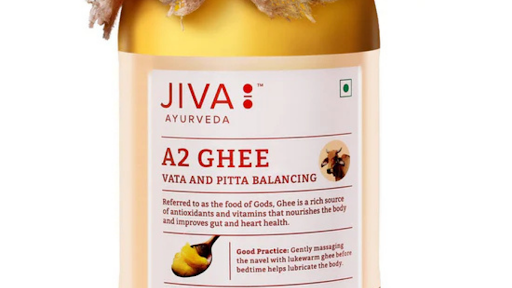A2 ghee is a tradition passed on from generation to generation due to its many nutritional benefits. This golden nectar, crafted exclusively from the milk of native A2 cows, is a revival of ancient dairy wisdom that science is now starting to prove. With consumers growing ever more wise about the quality and origin of foods, A2 ghee is proving to be a higher-quality alternative to regular dairy.
What Makes A2 Ghee Unique Compared To Regular Ghee?
That is in the protein content of the milk used to make it. A2 cows have milk with only the A2 beta-casein protein and not the A1 protein in milk from most contemporary dairy cows. This is important because research indicates that A2 protein would be more digested by humans, perhaps lowering inflammatory reactions and gastrointestinal discomfort, which some individuals may have while using traditional dairy products.
Original A2 ghee-making is a centuries-old art. The journey begins with the procurement of milk from Indigenous cow breeds like Gir, Sahiwal, Kangayam, or Red Sindhi—all naturally producing A2 milk. This milk is then turned into curd, churned into butter, and finally simmered on a gentle heat to dry water content and milk solids, ultimately producing pure, clarified butter with a distinct nutty aroma and deep golden color.
From a gastronomic standpoint, A2 ghee is very versatile. Due to its elevated smoke point of 485°F, it can be used in high-heat cooking techniques such as sautéing, roasting, and deep frying without the creation of toxic compounds. The subtle sweetness with slight caramel undertones adds depth and flavor to savory and sweet recipes. In Indian cuisine, it’s commonly employed in all, from everyday dal dishes to those fancy festival sweets, whereas Western cooks increasingly use it for baking, making compound butter, or adding a finishing touch.
The Health Benefits of A2 Ghee
The nutritional content of A2 ghee is noteworthy. It includes fat-soluble vitamins A, D, E, and K that maintain vision, bone strength, immune function, and healthy blood clotting, respectively. Butyric acid, a short-chain fatty acid, promotes gut health and possesses anti-inflammatory activity. A2 ghee also has high amounts of conjugated linoleic acid (CLA), which, according to some studies, might assist weight management and metabolic function.
Ayurvedic medicine, India’s traditional healing tradition, puts A2 ghee in a special category. It’s a “sattvic” food that is said to induce clarity of mind and harmonized energy. Used historically in everyday cooking and healing procedures, A2 ghee is said to strengthen “ojas” (vital energy), enhance digestion, and harmonize all three doshas (constitutional types). A modern interpretation of these uses from ages indicates that the readily digestible fats found in ghee can actually enhance cellular nutrition and nutrient uptake.
For individuals who are worried about lactose and casein sensitivity, A2 ghee may have some benefits. The clarification process eliminates most of the lactose and milk proteins, so it tends to be okay for individuals with mild dairy sensitivities. The particular A2 protein content could also minimize the risk of side effects from the product compared to products made from A1 milk.
When buying A2 ghee, seek products that explicitly declare the cow breed’s origin and adhere to conventional manufacturing processes. Grass-fed origins generally provide higher-quality nutritional profiles based on increased concentrations of beneficial nutrients such as CLA and omega-3 fatty acids. The slightly additional cost of genuine A2 ghee reflects its specialized manufacturing demands and superior quality—an investment in culinary refinement and nutritional health.
You can also explore our Amla Juice from Jiva and discover its powerful health benefits.





























